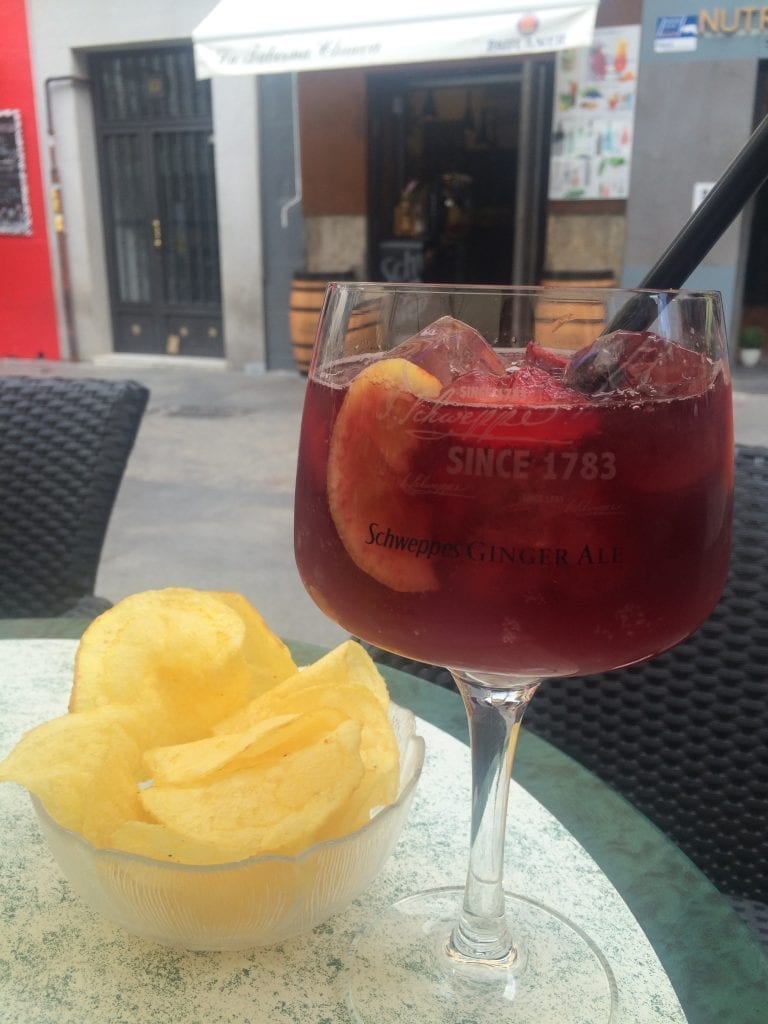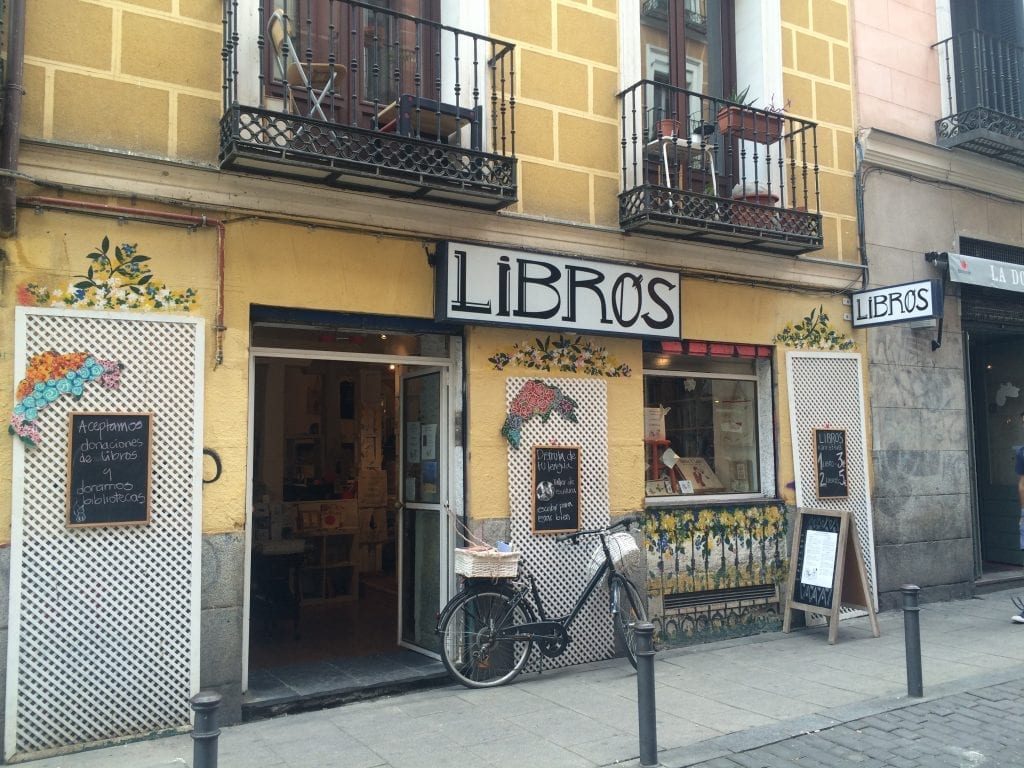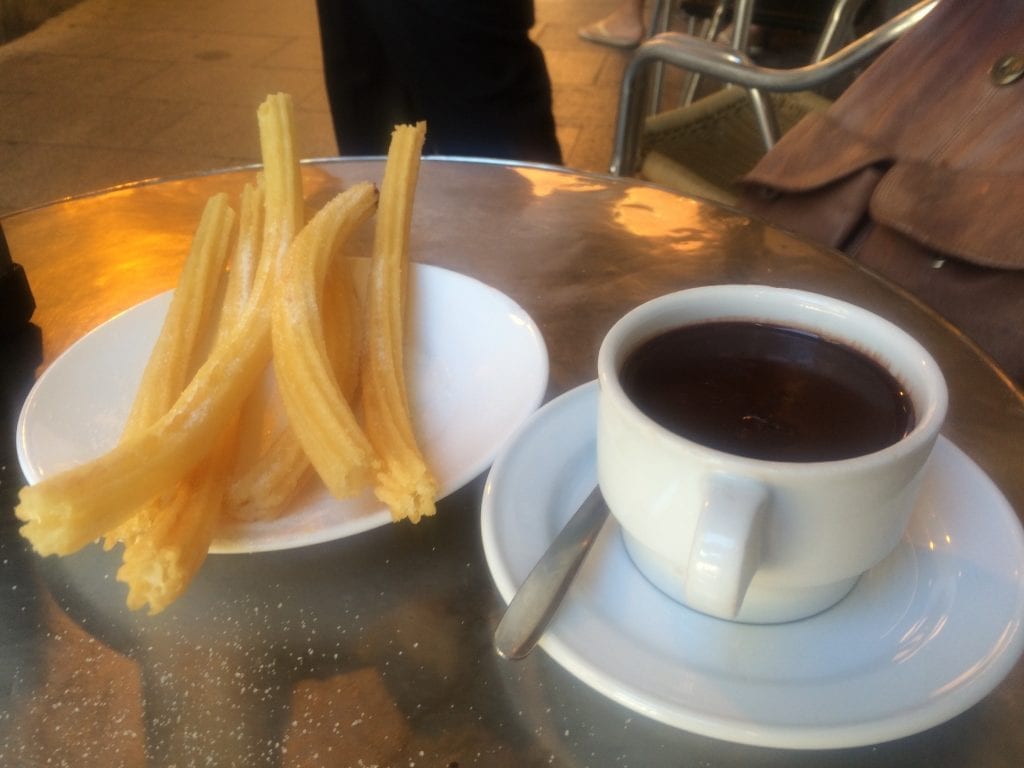Land-locked, football mad, the eternal rival to Barcelona, Madrid has a lot more to offer than boulevards and the beautiful game. Here, Rosie Benson takes at look at five must-dos in Spain’s capital city…
What to drink…
Nobody drinks sangria in Spain anymore, it’s all about Tinto de Verano. The perfect prelude to an afternoon siesta, this drink is made up of cool red wine and lemon soda, served on ice with a slice of orange. Admittedly very similar to sangria, I was dubious upon hearing its simple recipe, but I have to confess that I was a convert from the first sip. Its cool, refreshing taste is the perfect antidote to Madrid’s summer heat.

But where to drink your Tinto de Verano? For the best views over the white rooftops of Madrid, it has to be at Azotea. This rooftop bar is situated atop Circulo de Bellas Artes, a historic building in central Madrid, where a short lift ride from the lobby reveals an expansive white roof terrace, complete with comfortable beds, intimate tables, and rows of green grass. It’s a Made in Chelsea location with Made in Madrid prices: a Tinto here will set you back just six euros (although for your Spanish friends this may seem extortionate). Dress in your finery and arrive at sunset for the best selfie-lighting.
Where to wander…
I’m a firm believer that the best way to see any city is on foot, and the centre of Madrid is no exception, being composed of roughly five different areas easily explored over two or three days. For an improvised walking tour, start in Malasana, the so-called ‘hipster’ area, (note the hummus-only tapas bar ‘Hummuseria’ on Calle Hernan Cortes), followed by a stroll through Chueca, Madrid’s colourful LGBT quarter. Finish at the Parque de el Retiro, the 350-acre public park formerly owned by the Spanish monarchy, home to its very own lake, as well as many sculptures, galleries and monuments. Here, depending on your energy levels, have a well-deserved siesta under a tree, or take a rowing boat out on the water and admire the greenery.
Of course, there are plenty of cafes for a pit stop en route. The best being Tipos Infames Libros Y Vinos, a book shop and wine bar in one, and La Ciudad Invisible, a travel shop-cum-café complete with a beauty-and-the-beast style rolling ladder on the book shelves. For those who prefer being outside, Plaza de Chueca, at the eponymous metro stop, has plenty of bars from which to sit back and people-watch.

To learn more about Madrid on foot, take part in a free walking tour from Plaza Mayor. Sandeman’s tours leave at 10, 11 (am), 12 and 2 (pm) am every day and take in some of Madrid’s best sights, including the cathedral and Europe’s oldest restaurant.
What to eat…
Start your day the Spanish way with churros: so delicious, it’s hard to believe that a portion can be purchased for less than €2. But even at Chocolateria San Gines, Madrid’s most famous churros café, it’s possible. These soft, fried dough sticks arrive with a cup of liquid chocolate for dipping purposes. It’s hard to imagine a more decadent breakfast, but you’re on holiday, so why not?

For a quirkier snack, head to Monasterio del Corpus Christi, one of Madrid’s central convents that is deliberately difficult to find. In fact, we were told we’d find it through our sense of smell. This is because the nuns who live here are famous for their baked goods, and will happily sell them to curious tourists. However, the sisters prefer to remain hidden, and will deliver cookies only through a small, curtained hatch hidden at the end of a corridor inside the convent. Head to the wooden side door, and press the buzzer for your best chances of discovering this mysterious bakery. Alternatively, for those who prefer a more straightforward transaction, there’s a convent shop around the corner selling sweet treats handmade by the nuns. Truly divine.
What to watch…
Flamenco, a unique Spanish art form, is now so popular worldwide that there are more flamenco academies in Japan than in Spain. Thus, the chance to see an authentic Flamenco show on home ground should not be missed.
La Taberna de Mr Pinkletons, close to Plaza Mayor, puts on three shows a night at seven, nine, and eleven pm, each for €25 including a drink. We went to the 11pm showing and stopped nearby for a quick bite to eat beforehand (everything happens later in Spain). A word of warning: this is a touristy area where the food is overpriced, and pickpockets are common; it’s much better to eat elsewhere and arrive here for the show.
Yet despite the location, strange name, and alarming frequency of nightly performances, the show did not disappoint: from minimal resources the dancer, singers and guitarist created a fierce, guttural performance, with plenty of feisty footwork, impassioned dance moves, and expert Spanish guitar, all accompanied by the soft, steady beat of the flamenco clap.
Where to dance…
Salsa, famous the world over, has strong connections to Spanish culture, so it seemed only fitting that we went to a salsa party on our last night. Arriving early at The Host Club (€10 for entry and drink) we took a salsa and bachata class, where we spent an hour attempting to emulate the grace and fluidity of the teachers, without stumbling over their Spanish instructions or our partners’ feet. While I can’t say I quite reached Jennifer Grey and Patrick Swayze heights, it was a great experience and not at all as intimidating as feared. Do not be put off if you are a complete beginner, or by the prospect of going alone: classes are designed for all levels, and are extremely popular with both men and women.
But it’s after class that the party really starts. Once the lights come down, the floor is overrun by a swarm of professionals and amateurs showing off their dance moves. Suddenly, it really was like stumbling across a scene from Dirty Dancing. And, believe me, whether you are young or old, male or female, move like Jagger or have two left feet, you will be asked to dance and you will find it difficult to stop. Yet one of the ironies of salsa is no matter how flirtatious the dancing, when the song comes to an end it’s a kiss on each cheek, a polite ‘gracias’, and you’re on your way to the next.

